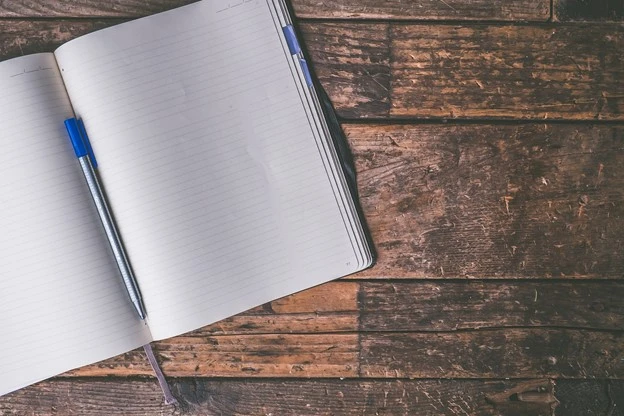
An essay is a philosophical, scientific, journalistic, or critical sketch, usually written in prose. It freely develops an interpretation of a phenomenon or an inquiry into a problem. It exposes the author’s point of view. Is characterized by attention to the beautiful and original delivery.
The mental argument contained in the essay generally has little respect for standard methods of reasoning. There are loose associations of ideas next to logical relationships, and poetic images next to verifiable sentences. The essay is often embellished with paradoxical formulations, witty aphorisms, and narrative or lyrical-reflective elements.
Determinants of a good essay
The aesthetic function plays a decisive role in an essay. The language of an essay should be artful, close to high style, sophisticated, and indicative of the author’s reading and eloquence.
An essay is an open literary form. The author makes a kind of attempt to get to the substance of the issue he is addressing but does not present all the arguments, making a subjective selection of them. In this way, he signals the existence of a problem and forces the reader to think about it. Often the essay gives the impression of being unfinished, and its loose composition confirms the author’s literary craftsmanship.
The essay is purely subjective in nature, making visible the author’s individual approach to the topic addressed, who articulates his or her beliefs through a variety of associations. The essay is therefore a record of the author’s train of thought and represents his or her point of view.
The essay is associative (random) in nature. It is based on the principle of loose associations and lacks any order (chronological, thematic) or hierarchy of arguments presented. It is a series of mental shortcuts, which makes it seem fragmentary.
A characteristic feature of the essay is a genre and genre syncretism. It combines features of many literary genres, making it difficult to classify them into one of the known literary types.
One of the features of the essay style is intertextuality. The author may use various quotations, aphorisms, and references to other literary and cultural works, and may weave in historical and philosophical allusions.
The author may introduce free digressions into the flow of the essay, completely unrelated to the main problem addressed in the essay.
Composition of the essay
The basic principle of essay composition is complete freedom. The essay can have a variety of shapes and thematic and stylistic ranges. The loose, fragmentary composition is subordinated to the author’s overarching idea, and the way in which an issue is framed depends solely on the author’s creative invention.
How to plan the writing of an essay?
- We start working on the essay by writing down the conclusions that arise after a careful analysis of the given topic. These can be loose associations, arguments, or questions, related to the given topic. Write down each thought on a separate sheet of paper, leaving space to expand on it with specific quotations, digressions, or references to other works. Prepare all the materials you will use while writing the essay, all essay paper helper source texts, quotations, aphorisms, etc.
- Draw up a plan, which will be the compositional axis of your essay (you can use a string of keywords). From the conclusions, you have written down beforehand, choose the ones you find most interesting, unique, and in line with your views on the given topic. Organize them, trying to find analogies between the successive associations so that they form a reasonably coherent and logical whole.
- Develop your conclusions, focusing on the main issue. Complete them with your own thoughts, and also read the opinions of others on the topic you are addressing. Contrast them with your own conclusions. Match each conclusion with appropriate quotations or references to other source texts. Enrich them with historical and philosophical allusions. Remember that an essay is first and foremost the subjective opinions of the author, so you must always make your presence felt in the text, guiding the train of thought in such a way as to make the reader curious and force them to make their own reflections on the issue you are discussing.
- Once you have completed your conclusions (each written on a separate sheet of paper in the form of a self-contained semantic unit), you can proceed to edit them stylistically. Give them titles and subheadings, and organize them in the correct order, according to the plan you have prepared in advance.
- Write an introduction (you can use a motto appropriate to the topic), introducing the reader to the topic of the essay and giving a general idea of how the issue is being addressed. Subsequently, rewrite the associations and conclusions you have previously arranged into a logical whole.
The essay does not need a clear ending, but you can summarise your thoughts with a short concluding reflection, sensitizing the reader to the issue you have raised.
Remember!
- An essay is based on a free interpretation of an issue, problem, or phenomenon.
- You must demonstrate literary craftsmanship by using contrast, digressions, and loose associations.
- Express your thoughts concisely and clearly, creating a new take on the topic.
- Focus primarily on subjective feelings and reflections.
- Under no circumstances introduce literary fiction.
- Boldly use quotations, allusions, aphorisms, and references to other works of art appropriate to the topic.
Common mistakes:
- The author introduces literary fiction into the essay.
- The essay loses its form by introducing a strict plot.
- The author fails to connect successive fragments into a coherent whole and the text is chaotic.
- Stylistic, spelling, and punctuation errors.